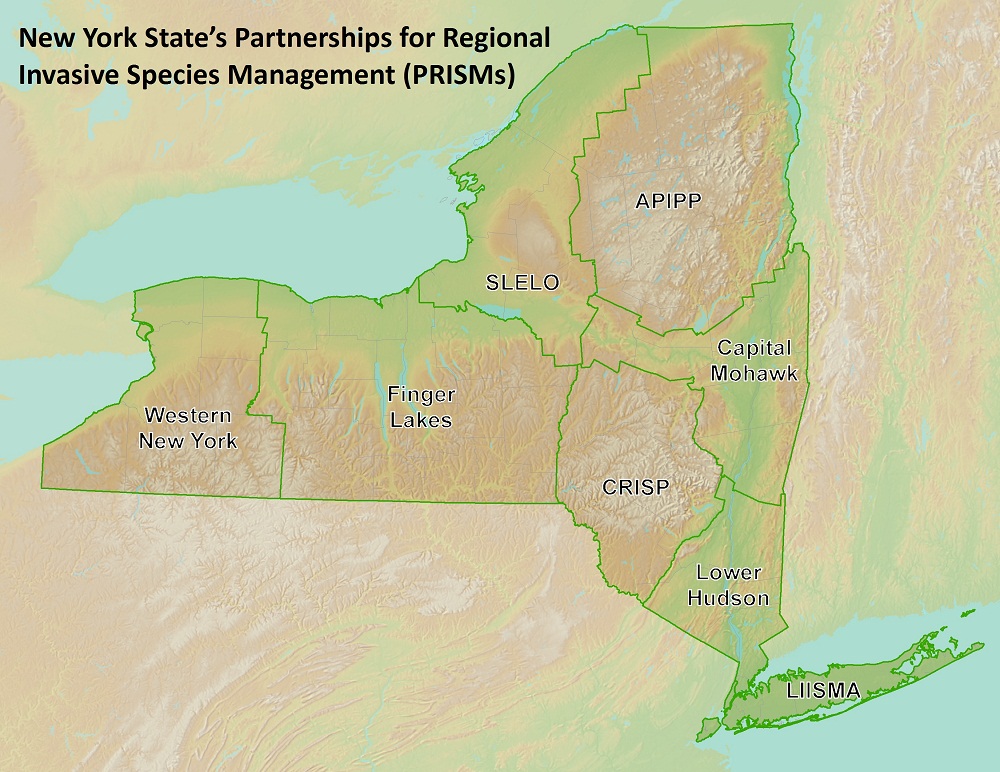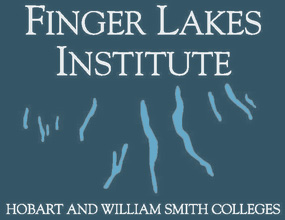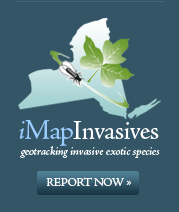2017-2018 Finger Lakes PRISM Annual Report is in!
See the full report here: 2017_2018AnnualReport_Final
Partners,
We have successfully closed the books on the 2017-2018 fiscal year as of March 31, 2018 and I am happy to report on the amazing invasive species work in the region.
The Finger Lakes-PRISM saw much growth over this past year. We trained 318 people in the iMapInvasives mapping system and recorded 4,113 observations for the region. We engaged partners to place bootbrush stations and currently have 51 in the region. We sponsored Clean, Drain, Dry billboards across the Finger Lakes resulting in 7.77M impressions. Hydrilla verticillata detected in Aurora, NY in the fall of 2016 was managed and treated by the US Army Corp of Engineers with coordination and facilitation from the Finger Lakes PRISM. And, the goals and objectives of the Finger Lakes PRISM strategic plan were further met through prevention, coordination with partners, early detection/rapid response, education and outreach to the community and K-12 students, information management and communication, and legislation and support from federal, state and local funding sources.
Some highlights from the FLI Finger Lakes PRISM 2017-2018 fiscal year include:
- $979,999 in competitive funding for invasive species work from state and federal sources
- 49 workshops with 2,979 community members engaged in invasive species*
- 17 Tabling events with over 74,000 people in attendance*
- 23 Presentations conducted that conveyed invasive species programming to 938 people*
- 318 people trained to use iMapInvasives across 18 programs
- Watercraft steward program inspected 35,468 boats at 17 launches across the Finger Lakes and engaged 79,084 people in Clean, Drain, Dry messaging
- 70 events held across the region in honor of NY Invasive Species Awareness Week
- Water chestnut control team removed 8 acres of water chestnut across 16 sites and surveyed 3,198 acres for high priority aquatic invasive species
- 30 acres of giant hogweed were controlled and an additional 6 acres were surveyed for high priority terrestrial invasives
- 250 acres of invasives and 30 acres of honeysuckle at Ganondagan were mapped as part of Finger Lakes Institute (FLI) USFS CWMA grant
- 37 miles of trail were mapped for invasive species on the Finger Lakes National Forest as part of the FLI US Forest Service Cooperative Weed Management Area grant
- Facilitated Cayuga County Hydrilla verticillata task force, actively sought funds for treatment, worked with USACE Hydrilla Collaborative and state and federal government to seek funds, and presented at various meetings on the need for funding.
*includes FLI Environmental Education Program data
These are just a few of the highlights from the work across the region. We have many things for which to be proud in our Finger Lakes PRISM region. I look forward to a successful 2018-2019!
In service,
Hilary R. Mosher, Coordinator, Finger Lakes-PRISM
Acknowledgements
I am thankful to our host organization, the Finger Lakes Institute at Hobart and William Smith Colleges, and our New York State (NYS) partners which include the NYS Department of Environmental Conservation (DEC) Invasive Species Coordination Unit, the NYS Invasive Species Council, the NYS Invasive Species Research Institute, the NYS Invasive Species Clearinghouse at Cornell University, and the New York Invasive Species Database known as iMapInvasives.
I am also very thankful to our Steering Committee, Agriculture, Aquatic, Education & Outreach, and Terrestrial Working Group members for their dedication, expertise, and commitment to furthering the mission of the Finger Lakes PRISM. A big thank you to our grant collaborators and partners who work tirelessly to survey, identify, report, and control invasives across the region. There is no ‘Partnership’ without our partners and we are grateful for your service.
The Finger Lakes PRISM is funded by the Environmental Protection Fund, through contract between the NYS Department of Environmental Conservation and Hobart and William Smith Colleges.




